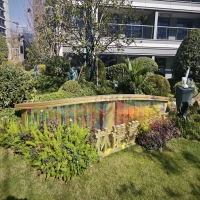Welcome to the website for landscape facilities products and knowledge.
How does the trash can’s shape impact its visibility in outdoor settings?
The shape of a trash can plays a crucial role in its visibility and usability in outdoor environments. A well-designed trash bin not only enhances aesthetics but also ensures easy identification, encouraging proper waste disposal.
1. Height and Silhouette
Taller trash cans with distinct silhouettes are more noticeable in crowded or landscaped areas. Cylindrical or rectangular designs stand out against natural backgrounds, making them easier to spot from a distance.
2. Color Contrast
While color is separate from shape, the combination matters. Angular or uniquely shaped bins in bright colors (like green or orange) improve visibility, especially in parks or streets.
3. Opening Design
A wide, funnel-shaped opening draws attention and signals functionality. Pedal-operated or sensor-based lids with pronounced shapes also increase interaction rates.
4. Placement and Footprint
Low-profile, rounded bins may blend into surroundings, whereas hexagonal or tiered designs create visual interest. For high-traffic areas, asymmetrical shapes can prevent obstruction while remaining visible.
5. Urban vs. Natural Settings
In cities, sleek geometric bins complement infrastructure, while nature parks benefit from organic shapes that harmonize with the environment yet remain identifiable.
Optimizing trash can shape improves public cleanliness by balancing visibility with context-appropriate design. Municipalities and designers should prioritize form and function to maximize waste management efficiency.
Related search:

Recommendation
Metal and acrylic color-changing combined curtain wall for large-scale public landscape facilities